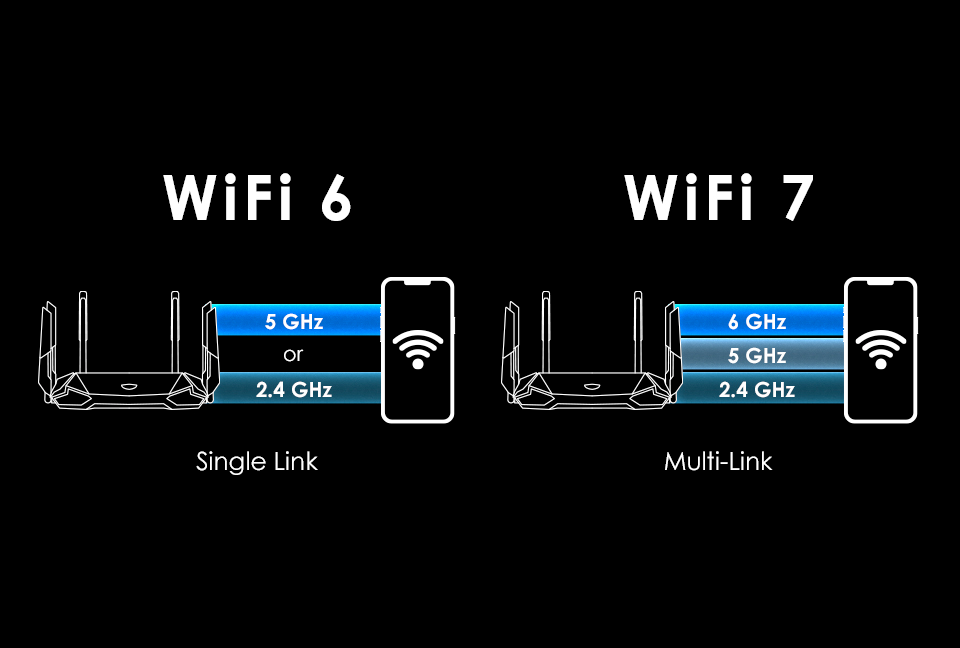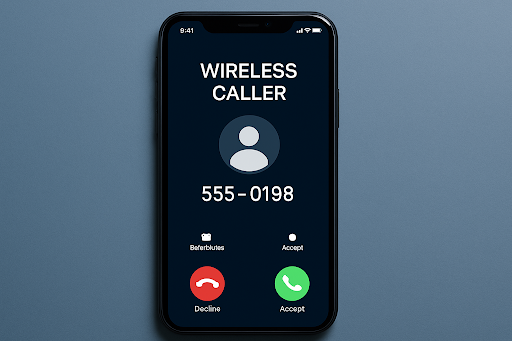
Should you switch from WiFi 6 to WiFi 7? Here, we review the speed, key features, and performance of WiFi 6 and WiFi 7 to assist you in choosing the best one for your home or workplace next year. Be aware of how terraformers differ and why one might be a better pick for your platform.
Why Compare WiFi 6 and WiFi 7 Now?
People are increasingly looking for faster and more reliable wireless internet every year. With people using the internet for homes, jobs and entertainment games, the question arises: Is WiFi 7 really better than WiFi 6?
WiFi 6, which came out in 2019, greatly improved both speed and performance when many users use the same network. Nevertheless, upcoming WiFi 7 is looking to open new doors in wireless technology.
WiFi 6 vs WiFi 7 Speed: Learn how WiFi 7 outperforms WiFi 6 with faster data rates, lower latency, and improved efficiency for smoother streaming, gaming, and smart home performance.
Here, we’ll break down the complete comparison of WiFi 6 vs WiFi 7, covering their speed, delay, frequency range and examples of practical situations.
What Is WiFi 6? Features & Benefits
WiFi 6 helps increase speed when many devices are together on one connection. As a result of using OFDMA, MU-MIMO and 1024-QAM, the network worked better, provided greater bandwidth and became faster. It is often known as 802.11ax as well.
- Maximum Speed is upto 9.6 Gbps
- Frequency Bands are 2.4 GHz & 5 GHz
- MU-MIMO: Supports up to 8 simultaneous streams
- Latency: Reduced significantly for real-time applications
- Security: WPA3 encryption
- Target Wake Time (TWT): Extends battery life for IoT devices
The reason WiFi 6 is used in most homes and offices today is that it delivers good performance and is compatible with a lot of devices.
What Is WiFi 7? Advanced Features for 2025
By 2024 or 2025, WiFi 7 will start to appear, also called Extremely High Throughput (Extreme HT). While it uses WiFi 6 and 6E, it offers huge upgrades in how rapidly it works, how responsive it is and its total bandwidth.
- Maximum Speed is upto 46 Gbps
- Frequency Bands are 2.4 GHz, 5 GHz and 6 GHz
- Multi-Link Operation (MLO): Combines multiple bands for better throughput
- 320 MHz Channels: Double the bandwidth of WiFi 6
- 4096-QAM: Allows higher data rates with the same signal strength
- Lower Latency: Near real-time response is ideal for AR/VR and cloud gaming
WiFi 7 is created for future uses and makes it possible to enjoy upgraded streaming, thrilling games and forthcoming features for businesses.
Real-World Usage
While the numbers look impressive, the real speed is what truly counts. WiFi 6 is capable of transferring data at 1.5 to 2 Gbps when ideal. When using WiFi 7 and MLO, there is a solid chance for real-world transfer speeds of 5 to 10 Gbps or more.
Performance & Speed: WiFi 6 vs WiFi 7
Latency
- With WiFi 6, latency is decreased from WiFi 5…this is great for video calls and often-played games.
- With WiFi 7, multi-Link Operation and better spectrum utilization, applications using the cloud in real time will benefit.
Network Efficiency
Although WiFi 6 used OFDMA and MU-MIMO to enhance efficiency, WiFi 7 takes it one step further by helping data flow over multiple links which makes the network more stable and faster.
Bandwidth Management
With double the channel width (320 MHz), WiFi 7 handles multiple high-bandwidth tasks like 8K streaming and large file transfers with ease.
Speed Comparison
Speed is one of the most talked-about differences between WiFi 6 and WiFi 7. Let’s break it down:
| Feature | WiFi 6 | WiFi 7 |
| Max Theoretical Speed | 9.6 Gbps | 46 Gbps |
| Channel Width | 160 MHz | 320 MHz |
| Modulation | 1024-QAM | 4096-QAM |
| Multi-Link Support | No | Yes (MLO) |
Compatibility & Devices in 2025
WiFi 6 Compatibility
- Supported by most modern routers and smartphones since 2020
- Works well with existing infrastructure
- Ideal for general users, families, and small businesses
WiFi 7 Compatibility
- Limited to newer devices released in late 2024 or later
- Best for early adopters, gamers, and power users
- Backward compatible with WiFi 6 and 5
Expect premium smartphones, laptops, and gaming consoles in 2025 to include WiFi 7 support as standard.
Security Enhancements
WPA3 was implemented with WiFi 6, making wireless security much stronger. While now supporting the WPA3 standard, WiFi 7 may introduce WPA4 and provide even safer encryption options.
For now, privacy and security in browsing and sharing information come from properly adjusting both standards.
Energy Efficiency
WiFi 6’s Target Wake Time (TWT) helped save power by allowing battery-powered devices to pause until called for. WiFi 7 ensures that efficiency remains high and also helps reduce power use when there are multiple devices in the same network.
Who Should Upgrade to WiFi 7?
Upgrading to WiFi 7 depends on your usage needs:
Upgrade If You:
- Stream in 4K/8K across multiple devices
- Rely on low-latency cloud gaming or AR/VR
- Have dozens of smart devices or run a smart home
- Use the latest smartphones, laptops, or workstations
- Need future-proof performance
Stick With WiFi 6 If You:
- Use the internet mainly for browsing, video calls, and streaming in HD
- Have older hardware not compatible with WiFi 7
- Are budget-conscious or already satisfied with your network speed
Expert Insight: Future-Proofing Your Network
The difference in post is that WiFi 7 will be rapidly taken up in the corporate sector by 2026, mostly in telehealth, gaming and areas using AI. Even so, it may be 2027 before home AI is common due to the high cost of hardware today.
Additionally, you should know that using WiFi 7 requires you to have both a new router and devices that are WiFi 7 compatible.
Conclusion & Expert Verdict: Should You Switch in 2025?
If you are developing a modern digital system, choosing WiFi 7 adds significant value. Thanks to its extreme speed, nearly instant response and maximum efficiency, it is the preferred choice for high-use users ahead and in the future.
Still, WiFi 6 is an excellent and dependable solution for home and small workplaces. Regionally, it is speedy, reliable and cheaper to use right now.
FAQs
How is WiFi 7 different from WiFi 6?
WiFi 7 increases speed & reduces lags since it uses broader channels and Multi-Link Operation.
Which is better, WiFi 7 or WiFi 6?
WiFi 7 is able to handle more data and it is more efficient under crowded conditions than WiFi 6.
What are the disadvantages of both?
WiFi 6 is not designed for extremely crowded networks and WiFi 7 is just beginning to be used and costs a lot.
How fast can both of them travel?
As mentioned earlier, the speed for WiFi 6 is 9.6 Gbps & WiFi 7 is at 46 Gbps.
Is there a connection of WiFi 6 to 5G?
WiFi 6 is used with 5G networks, but they are unique technologies.
How quickly can information be transferred on WiFi 7?
The speed of data sent using WiFi 7 is up to 46 Gbps.


